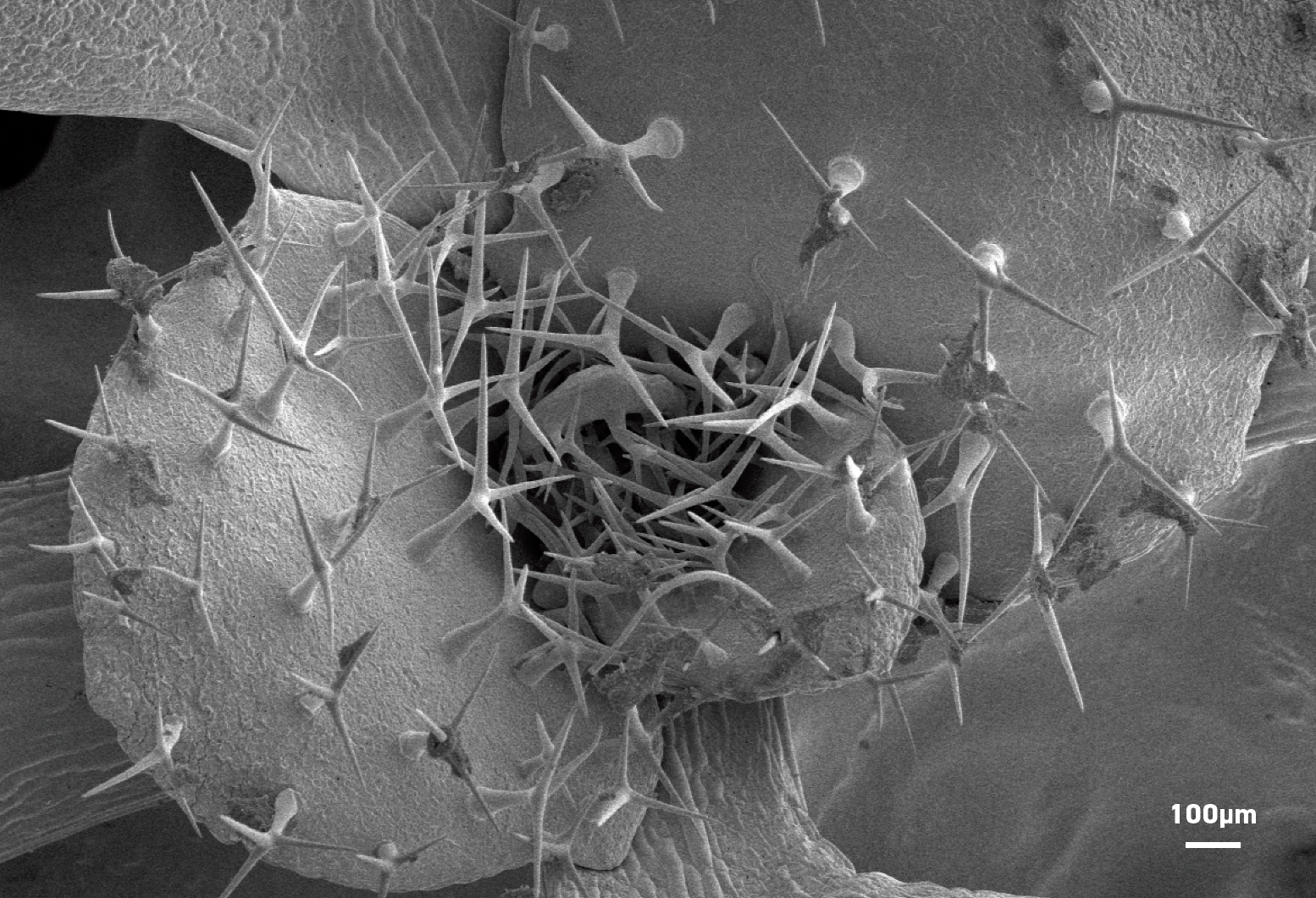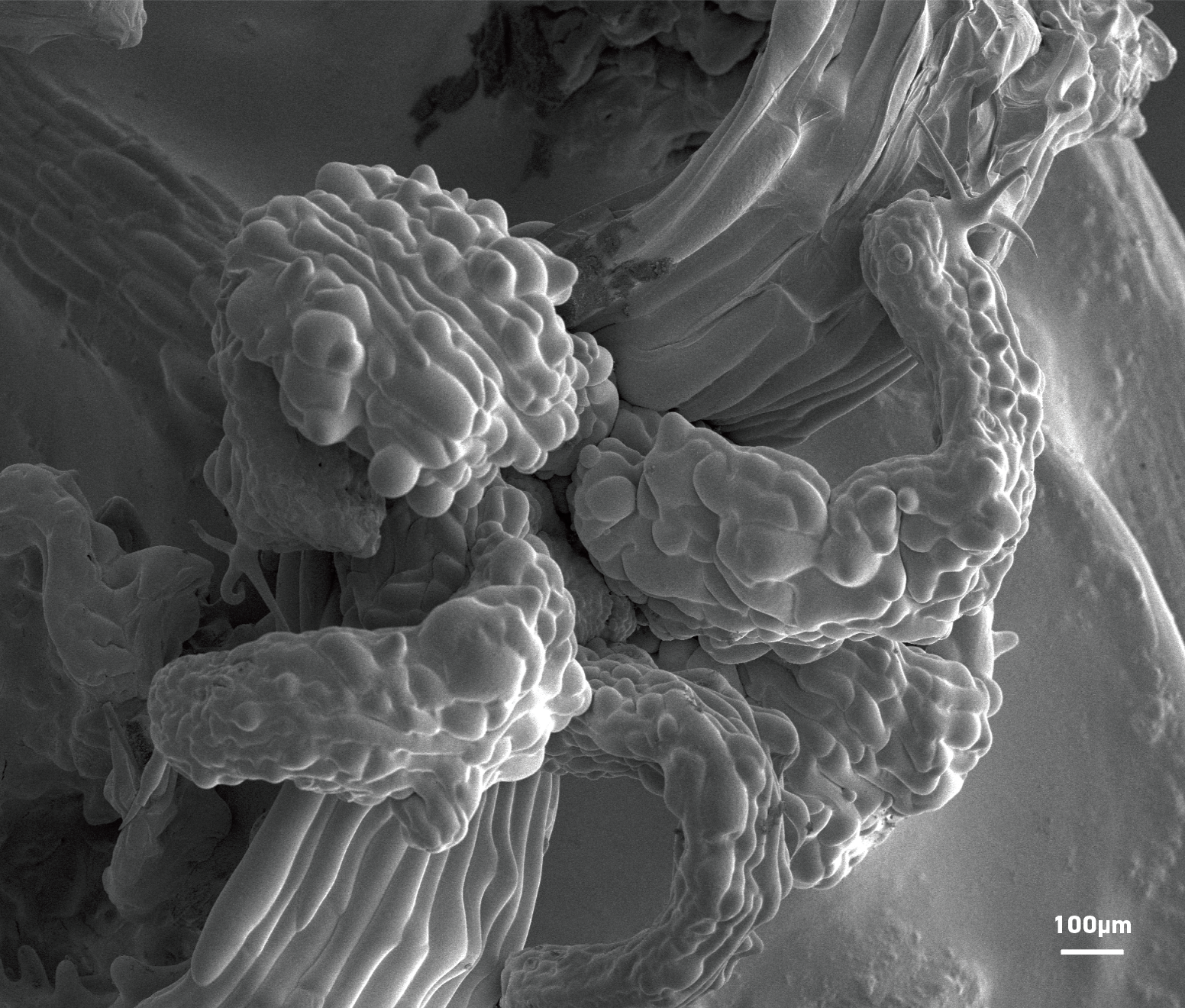Plant biologists have recently shown that apocarotenoid signals (ACS) give plants essential cues for root, leaf, and flower development, as well as protecting them from adverse environmental conditions. How they do this is being investigated by Dr Ryan McQuinn and Prof. Barry Pogson at the ARC Centre of Excellence for Plant Energy Biology at the Australian National University (ANU) in collaboration with Prof. Patricia Leon at the National Autonomous University of Mexico (UNAM).
In an experimental plant strain one of these molecules, called ACS1, accumulates to well above normal levels, disrupting normal plant growth. Prof. Leon’s group found that the pattern of gene activity in these plants suggests that ACS1 promotes flower development.
To explore this possibility, Dr McQuinn analysed the plant architecture and leaf structure by using cryo scanning electron microscopy at Microscopy Australia’s facility at the ANU and compared them to normal plants.

Leaves usually develop in a spiral pattern (above), with an abundance of spiky hairs. The experimental plants (below) lack the spiral leaf arrangement and hairs. Instead, the surface is much bumpier with cells more closely resembling the part of a flower where pollen attaches for pollination. This was confirmed when pollen came in contact with the lumpy cells of the experimental plant, “inflating” like it would during pollination.

ACS1 appears to be the first chemical signal discovered that triggers flower formation. Elucidating this previously enigmatic process opens up potential new ways to control flowering with significant implications for agriculture and future food security.
SEM image of normal leaf development pattern
July 24, 2018